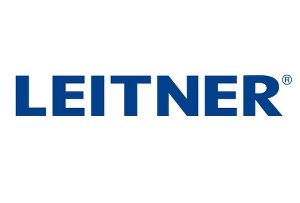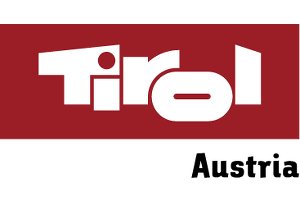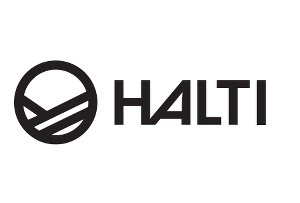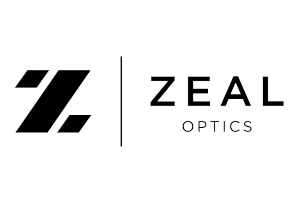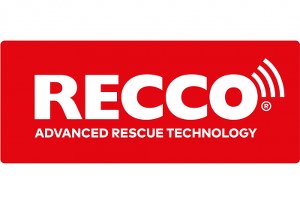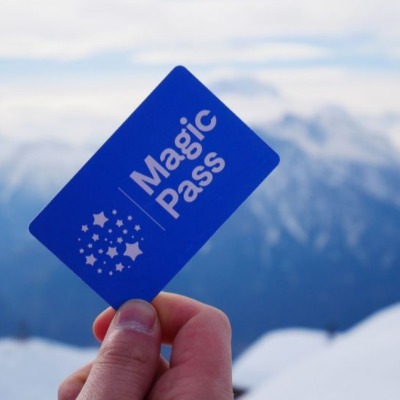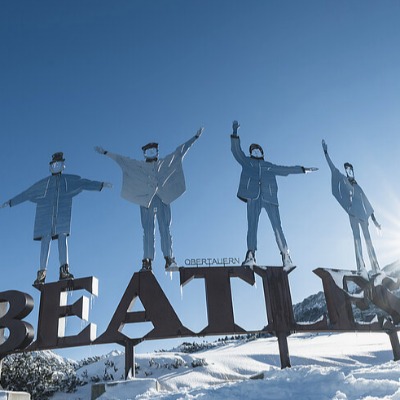NSAA Honors Chris Cushing & Chip Perfect

The National Ski Areas Association has named two longtime ski industry leaders as the recipients of two of its most prestigious awards.
2025 Lifetime Achievement Award Recipient - Chip Perfect
NSAA’s Lifetime Achievement Award often goes to somebody who recently retired. Chip Perfect, president of Perfect North Slopes and CEO of Timberline Mountain, is not one of those recipients. After 45 years in the ski industry, he has no plans to retire, and some of his colleagues think he probably never will.
“Do what excites you; that’s what keeps you going in life,” is Perfect’s foremost Chip-ism, or words to live by. “Number two is, my version of retirement is doing less of what I have to do, and more of what I want to do. The combination is the ski business still excites me, and so I like doing it … certain parts of it.”
When he doesn’t have to run a groomer or climb into a bulldozer, for instance, Perfect enjoys both of those things, a testament to the hands-on involvement and dedication that come with the territory of a family business.
“How does an Indiana ski area on the Ohio River do all that? That's really what's amazing about all this,” said Dave Byrd, NSAA’s director of risk and regulatory affairs, referring to Perfect’s many noteworthy achievements. “He has just been one of the preeminent leaders for Midwestern ski areas. He's shown what small, family-operated ski areas can excel at.”
King of the side hustle, Perfect’s career so far has been one of startups, serial entrepreneurship, catalyzing change, having fun, and improving everything and everyone he touches.
Forming a Ski Area Habit
When Indiana State University student Kelly Green turned up one day at their farm with the idea for a ski area, the Perfect family was intrigued. Green had just completed a college project concluding that their hill’s north-facing slope and 30-minute proximity to Cincinnati were compelling reasons why it could work. That was 1979, and by the next year, Perfect North Slopes became the second ski area to open in Southern Indiana, with two handle tows, three rope tows and a handful of runs. Between that inkling and full fruition, the family went about researching how to start a ski area the only way you could back before the internet, “call some people up,” Perfect said.
“Much like the farm business that we had grown up in, when you talk to somebody about something they love, like people love the ski industry, they were very open to sharing ideas with us, and very welcoming,” said Perfect of the passion and camaraderie of those who answered the call — something that struck him so deeply he strived to pay it forward throughout his career. “It was really myself, my mom and dad, my older sister Tarry and her husband Todd that initially agreed that we would build this ski area together.Perfect North Slopes early days
“And the good news is … we had different skill sets, so there was enough to do,” added Perfect. “We literally, probably for the first almost 20 years, did everything at the ski area ourselves, and a lot of that time, had second jobs to support our ski area habit.”
The term side gig hadn’t been coined yet, but that’s how the family was thinking about this new winter venture while they continued to run their 200-acre cattle and crop farm. Perfect’s father, Clyde, remained in the brick business, and Chip — freshly graduated from Purdue with a degree in agricultural education — took up teaching ag half-days at a nearby school, and then working the ski area in the afternoon and evening.
After those first 20 or so years, Clyde retired, and Chip “really came [into] his own,” said Jonathan Davis, GM of Perfect North, executive director for Timberline and currently serving on NSAA’s board. Although he may have officially taken the helm at that point, “we sort of cohabitated the leadership space,” according to Perfect.
“Everybody in my family is a leader. We were raised that way. My dad was all about the building and the self-engineering and constructing of things; my sister was more about the administration; and that left me to deal with the employees and the customers,” he said, adding with a laugh that “Surviving the ski business in Southern Indiana was challenging, but surviving the family business was even more challenging.”
Michael Berry, NSAA’s president at the time, took notice of Perfect’s leadership abilities and efforts to elevate the ski area. Berry invited him to join the board in 2004, and Perfect would go on to think of Berry as one of the great mentors and helpers of his career. Never hesitant to speak up, Perfect was an involved and vocal director, which contributed to his ascension to the executive committee in 2007 and election as the first chair from the Midwest in 2012.
“It was a really proud moment, not just for me, but for all the ski areas in the Midwest,” said Perfect. “Michael did a really great job during his tenure of breaking down the us versus them barrier, small versus large, and showed a lot of respect to the Midwest ski area operators that maybe hadn't happened in the past.”
Change-Seeking Innovator
What also turned heads in Perfect North’s direction was the sheer amount of advancement coming out of the small ski area. Not many people are fans of change; Perfect embraces it. The ski area was out front on integrating webcams, which helped with the struggle “to convince people that we had snow and everybody else didn’t,” Perfect said, adding that necessity, combined with their farming background, led to his family’s fascination with snowmaking. Even then, people were talking about blowing snow in warm temperatures, but Perfect stuck to his guns on seizing shorter, more intense windows of opportunity.
“We were one of the early adopters of really high-capacity snowmaking, capable of making a lot of snow when we did get cold,” Perfect pointed out.
Joe VanderKelen, president of SMI Snow Makers, further quantified that, adding that Perfect North Slopes is still a leader in fan guns and gallons per acre of terrain covered. With more than 100 GPM and three fan guns per acre of terrain, the ski area invested heavily in snowmaking over 25 years ago.
“They have been able to get open a lot of terrain after a 24-hour cold snap, and they were very ahead of most resorts with regards to fixed snowguns as well,” VanderKelen said, calling Perfect “a leader in our industry and also a trailblazer … for day visit resorts near big populations in a tough climate.”
VanderKelen also called out Perfect North’s tubing operation, one of the most visited in the country, for installing a long carpet lift when handle tows were the standard. The ski area also maintains pristine tubing lanes with daily grooming. Finding unique ways to welcome beginner skiers and riders has always been a strong focus for the Perfects, and not just for the sake of the region.
“I'd only skied once before we opened the ski area, and I was the expert in the family,” laughed Perfect. “We were beginners as well. So our focus was always on new skiers, which is critical in an urban market.”
Given their knowledge gaps, the family leaned heavily on its volunteer patrollers for guidance. Perfect’s wife, Ellen, was among the experienced leaders on their original ski patrol, which is how they met.
“When we got in the ski business, people [thought], sort of naively in my opinion, that they're shedding some liability by abdicating some of the responsibilities to the ski patrol,” Perfect explained. “From day one, we just recognized it as a strong partnership and realized it was important for us to make the primary decisions and be responsible for the hill; they were more about monitoring and first aid. We got a couple of great people involved, and they got other great people involved. And to this day, that continues.”
Another change Perfect nudged out of the norm was adopting a flex ticket in place of selling sessions throughout the day, according to Davis. He appreciates Perfect’s visionary nature and Steve Jobs-like way of grinding something down to its simplest form.
“It can't be so complex when somebody calls to say, ‘How much is it to ski?’ that it takes 10 minutes to explain to them,” Davis remembered of Perfect’s impetus (not to mention that his boss was known to answer the phones himself from time to time).Chip Perfect at NSAA
As Perfect refined this concept, he pioneered the early-return bonus for guests who skied fewer than four hours. What started as a $5 cash back incentive turned into an in-house credit, “which was brilliant on lots of levels: It kept the money in the business, but it also gave people an incentive to come back if it wasn't spent in the same day,” Davis explained.
“The revenue went up, people stayed longer, they had more time to practice,” he went on, adding that innovations like these started to leak out, especially with the onset of the internet. “But even before having a website, those were the kind of things that he was dreaming up and doing.”
Perfect also knew how to spot and adapt a good idea. Wachusett’s lesson credit — or learn to turn credit, per Perfect North’s spin on it — was one of those. Perfect continued to riff on the concept, reasoning that if beginner lessons were so important to conversion and longevity, then why weren’t they included in the price of a lift ticket? Against everyone’s advice, he did just that.
“Our ski school had to grow dramatically, but I think we grew not only in numbers, but in maturity that way,” added Davis. “We're still reaping the benefits from moves like that … changing the culture of ski school out of teach them how to ski … to teach them how to have fun. That made a world of difference in our pass sales and our loyalty and our conversion. That had ripple effects across the Midwest, and I would even say that it had effects across the entire industry.”
Davis and VanderKelen both mentioned rentals as another example of Perfect’s drive for constant betterment. In this department, he managed to both grow and streamline operations.
“They were way ahead in huge rental shops that efficiently moved guests through in record time with good gear sized correctly,” said VanderKelen.
One of those efficiencies had to do with tightening up their sizing offerings, according to Davis, who also brought up the SARA (ski area rental accessory) program. Perfect was instrumental in developing this buying group to boost the quality of rentals and ensure the lowest price for the smallest ski areas.
“His early support of programs like SARA-BP, industry specific insurance and electronic waivers, and incident reporting had him shaking up the snow globe when many were comfortable with it just sitting on the shelf,” wrote Davis in his introduction speech for the 2018 presentation of Perfect’s Jim VanderKelen Lifetime Achievement Award.
This honor recognizes an individual from the Midwest who has contributed to the ski industry’s success, according to VanderKelen. Perfect, who also chaired the Midwest Ski Areas Association board, was a model recipient, embodying the spirit of snowsports and attributes such as entrepreneur and risk taker.
“Chip has been so great at sharing information with others, solving complex problems that translated to our resorts benefiting from those solutions, and leading a growing business that creates lots of new participants in our sport,” said VanderKelen. “The themes we hear over and over again from guests who visit PNS are clean, efficient, family friendly and hosts of super fun events. Chip is smart, well respected, a great mind in our industry and has given back to many industry associations for his entire career.”
Chipping Away
Before reviving Timberline Mountain, W.Va., Perfect — who has fun turning an operation around — purchased Mad River Mountain, Ohio, with Tim Boyd in 2000, during the early days of Peak Resorts. Perfect also partnered with Rob Walz on Cascade Mountain, Wis., in 2006 to help revamp operations after Walz’s parents retired. These side projects highlight the ski biz hat Perfect can’t help but don whenever opportunities come along to “help out friends in the industry to lift them to a higher level,” said Davis.
That entrepreneurial hat went right back on toward the end of 2019 when Timberline came up for auction in a federal foreclosure sale. Perfect had long been looking for expansion opportunities with an eye on Timberline, a ski area with a 1,000-foot vertical situated 6.5 hours east of their Indiana property. The auction quickly surpassed their original $2 million ceiling, but Davis got the green light for one more bid during a frenzied text exchange with Perfect. Although they were the second highest bidder, Perfect North wound up winning Timberline for $2.2 million. They got right to work on a $10 million overhaul, putting in a carpet-loading quad and West Virginia’s first six-pack chairlift, installing new snowmaking, renovating the lodge, and reopening for the 2020–21 ski season.
“It was a great opportunity for so many of the people that we have to use their knowledge,” said Perfect, who appreciated his existing team’s support on this new endeavor. “We had about a dozen people from Indiana move there, which was a big thing, and we hired several spouses of people that moved there that had never worked for us before. It was a pretty big leap of faith in terms of, how quickly could we turn it around? How quickly could we build the culture that we wanted?”
The Mid-Atlantic skiing public responded positively to their Midwest-style of high capacity snowmaking, high volume grooming and much of the technology that Davis spearheaded, all wrapped in outstanding customer service. One big surprise, however, was how much of a driver their project has been for upgrades throughout the community.
“There's really nice houses on a lot of the slopes,” Perfect said of Timberline. “Most of them were in disrepair, and even the community [had a] lot of closed businesses. Once we got going, people started fixing up their houses, and businesses started to open again. We didn't expect any of that, but the community has really embraced this, and it's been very gratifying.”
Another learning that came out of the Timberline process: Some aspects of the business can be administered centrally, while others need to be dealt with locally. Perfect thinks that every business has a right size. They’re working toward theirs with regard to the kind of scale that justifies a significantly centralized admin, kicking the tires for opportunities to grow and diversify markets and climates.
In early March, Perfect North Slopes joined the short list of multi-resort operators with three or more ski areas when they welcomed Swiss Valley Ski & Snowboard Area into the fold (planned project announcements forthcoming in the months ahead). The Southwest Michigan ski area is roughly 250 miles north of Perfect North Slopes, and nestled right between Chicago and Detroit, about a 2.5-hour drive from each. Founded in 1968, Swiss Valley is a beloved, family-owned ski area that was looking for a path forward, according to Davis. Despite putting their heart and soul into it, they weren’t in a position to take on the significant risk and debt for that next step of necessary investments.
“When this family approached us, the ethos of how they operate and what they want their family legacy to be [all] lined up, and it made a lot of sense to me,” continued Davis.
Perfect Politician
Besides his ski areas, Perfect has gotten involved with at least 20 other startups and owns many businesses, from a local movie theater and restaurants to a dirt track speedway. You don’t get to be a magnate of that magnitude without a few grievances. One thing that particularly frustrated him was that their best and brightest were spending more time crossing and dotting regulatory Ts and Is than on delivering a great guest experience. Not one to complain without taking action, Perfect started to get more politically involved.
“Before I knew it, I was elected to the Indiana Senate,” said Perfect of his next “interesting little side gig” that spanned 2014–2023.
Perfect family at SenateAs a Republican Senator representing District 43, Perfect’s penchant for change bumped up against the government’s default setting for sameness. Perfect became the “self-appointed voice of reason in the Indiana Senate,” who took it upon himself “to keep us from doing stupid things.” Rising rather rapidly, he joined the Appropriations Committee within three years, chaired the Commerce and Technology Committee, and was eventually involved with several significant pieces of legislation.
One of Perfect’s goals early on was to modernize labor laws around the employment of minors. Established decades ago, the existing regulations no longer had relevance, according to Perfect, who called it a ridiculous system and an impediment to both kids getting jobs and to administrating in the ski business.
“I was probably the second largest employer, not only of young people, but of anybody in the Indiana legislature, and so that was one of my areas of expertise,” he said.
Despite taking some arrows from strong media opposition, he was able to get his bill through a year later. Perfect is especially proud of the fact that many other states took up the mantle to also update their own child labor laws. Meanwhile, at the ski area, Perfect’s absence from daily operations for those eight or nine years sharpened the rest of his team to function without him, leveling up trust among staff.
“Whether he did that on purpose or allowed it to happen … I think that it helped everybody be more proactive and look at the long term,” said Davis.
The value of their newfound agility became especially pronounced when the pandemic ushered in a new buying cycle, added Davis, who found that longer lead times necessitated quick decision-making without all the information. When it comes to these kinds of judgement calls while he’s away, Perfect likes to know that his leaders are similar, but not identical to his own way of thinking.
“As he told me, ‘Jon, you're in the spot you're in because we make decisions the same way 90% of the time,’” recalled Davis. “He's glad that it's not 100% of the time, because he needs somebody who tells him when he's off track.”
One of the hardest parts of being in charge, in Perfect’s view, is knowing when you’re wrong. He prioritized building a team that’s willing to speak up when an idea isn’t great, “because they’re not all winners,” he laughed. To that end, Perfect’s had lots of practice recognizing and retaining talent, counting Davis among his exceptional employees.
“He was just a superstar from the beginning. He had an acumen for technology that we didn't have,” said Perfect. “Turning Jonathan loose and letting him lead us in the area of technology allows us to continue to be innovative, and frankly, do some things that I think other ski areas ought to that aren't.”
Likewise, Davis’ deference toward Perfect encompasses his thought leadership, relentless pursuit of “excellence in the ski industry since he dipped his toe in 1980,” his ability to build authentic, lifelong relationships “to a point where his cup was overflowing back to all those around,” and that he continued to use that influence across the community, Midwest region and ski industry proper. Just as important and inspiring to Davis, Perfect never lost the spark.
Many common currents run throughout Perfect’s businesses (like the importance of maintaining your women’s bathroom TP inventory), but the ski industry keeps him on his toes like no other. He thinks of the season as 90, one-day events “because none of them are the same.” One day, for instance, you could be rallying the troops around affordable lifts for smaller ski areas, and the next day find yourself with two bulldozers stuck in the snowmaking pond’s sludge (a great story for another day).
“Of all the business I've been involved in, there are just none of them that come as close to as many if/thens — if this happens, then we do this — as the ski business,” concluded Perfect. “Changing course in the middle of the day or every day or every week, I still find that exciting and interesting, and it’s what keeps me going.”
NSAA’s Lifetime Achievement Award recognizes those individuals who have demonstrated an extraordinary lifetime commitment to NSAA and the ski industry and whose contribution will benefit the industry for decades to come.
2025 Industry Impact Award Recipient - Chris Cushing
Chris Cushing is celebrating his 40th year at the SE Group (founded as Sno.engineering in 1958), the company his father led in the 1960s. Many consider father Joe an originator of modern mountain planning. Meanwhile, son Chris has been riding the evolutionary wave of the industry over the past 40 years through dramatic change and modernization. He still loves what he does and is most at home hiking or skiing through the woods, imagining the possibilities.
In his career, Cushing’s magic has touched resorts on five continents. He has assessed, planned, and likely designed more lifts and ski trails than anyone in the world — at more than 200 different ski areas! Widely recognized in this industry, he’s been the man behind the curtain for design awards that Deer Valley, Steamboat and other world-renowned resorts have won.
A Walk in the Woods
Growing up in northern New Hampshire, Cushing was on skis at three, building a love for the sport and racing at nearby Cannon Mountain. Summers were spent hiking Franconia Notch and Mount Washington while camping in the White Mountains.
Young Cushing
The Sno.engineering office in Franconia was a favorite haunt as a child. By age five, Cushing was running around the office and looking over shoulders. He hung out with the sons of Jim Branch, Sno.engineering president. The boys would often stop in to pore over maps. As he grew older, Cushing joined his father at resorts, walking mountainsides and helping him lay out ski trails. Joe, now 94, recalls a ski area planning trip down to Massachusetts.
“Chris said, ‘Can I come along?’” said Joe. “He certainly showed indication that he knew where he was when he got into the woods.”
It was much the same way Joe broke into the industry. He was working on Sel Hannah’s farm when one day Hannah, Sno.engineering founder, brought Joe along on a ski area trip.
“He told me, ‘Just walk through the woods and tell me what you see,’” recalled Joe. “When I got out, I told him what I thought. So he gave me a shot doing map work. And all of a sudden, I was working for Sno.engineering.”
That experience was what piqued his son’s interest in the whole field.
“Going into college, I asked him, ‘What should I study to be a ski area planner?’ And he said, ‘Get a civil engineering degree.’ So that’s what I did,” said Cushing. Degree from the University of Vermont in hand, his first break came from snowmaking engineer Scott Barthold at Sno.engineering. “My dad called and said, ‘Hey, we’ve got an opening for a junior engineer. Are you interested?’ I said, ‘Absolutely!’”
In July 1985, Cushing followed in his father’s footsteps, joining him at Sno.engineering during a time of evolution for snowmaking.
“Snowmaking technology was on the cusp of exploding,” recalled Barthold. “It was pedal to the metal time. Before then, in unglorified terms, they’d been big plumbing systems. But all of a sudden, they became a lot, lot higher tech.”
Cushing would make the one-hour drive each day from Franconia to Lyme, shaving time like any good ski racer in his VW GTI, then working all day in a damp basement office. Under Barthold’s tutelage, Cushing was learning the ropes — doing pipe sizing, pump selection and building research studies on how to get from point A to B. Two years later, an opportunity arose to move more into mountain planning. Cushing seized the moment, giving up his basement office to put boots on mountain trails.
“The first ski trail I ever designed and laid out on the ground was the Two Miles Home trail at Bretton Woods,” he recalled. “It was my first soup-to-nuts ski area design.”
Plotting His Own Trails
This shift came at a time when mountain systems were evolving with rapid advances in uphill efficiency from detachable lift technology. When the world’s first high-speed, detachable quad was installed at Breckenridge in the early 1980s, it set off a flurry of activity over the next decade with Cushing dropping in at an opportune time.
The advent of faster, higher-capacity lifts brought a new need at resorts to achieve a more balanced network on the mountain. Cushing’s workload quickly grew around New England. But in the late ’80s, business picked up in Japan.
“From about 1988 until 1997, about half of my work was in Japan, which was really interesting and a lot of fun,” said Cushing, who found it fascinating that earlier Japanese resort development used separate, single-seat chairlifts for each ski run before eventually replacing them with quads. “Of course, that’s great — it got rid of the lift lines. But then the ski runs were very crowded. So a big part of our work was looking for additional terrain and introducing the whole notion of balancing uphill lift capacity with downhill terrain capacity.”
Cushing visionary
Among his many Japanese projects were resorts in Shiga Kogen and Iizuna Kogen, near Nagano, which were both used in the 1998 Olympics. He also did work for Rusutsu, a Hokkaido resort near Sapporo, at a time when its owner, Kamori Kanko Ltd., also owned Steamboat and Heavenly. Years later, Cushing made a return visit on a personal ski trip to ski Rusutsu.
“They had built out the plan that we had done, but I hadn’t been back,” said Cushing. “It was really fun, people loved it. The thing that really struck me is that it didn’t feel like an expansion; it was very much a natural extension to the resort.”
It was an exhilarating period in the resort planning industry. Ski areas were starting to adopt detachable lifts, and stateside, Cushing got involved on projects at Whitetail, Pa., Deer Valley, and Jackson Hole, Wyo.
“Most of the resorts were expanding their footprint within the resort, adding new terrain, expanding lifts,” he said. “There was also a transition into summer grooming that smoothed out the trails. It was all part of a kind of expansion of ski area capacity back in those days, making the terrain capable of supporting more skiers per acre.”
The demand from resorts came with a need for planning, permitting and market studies. There was a desire for greater efficiency in lifts, with longer detachables often replacing two smaller legacy lifts. Grooming was becoming more efficient. And the demand from skiers for a higher level of quality all around was growing with it.
“Resorts were looking for ways to increase the revenue stream,” he said. “And that came in the form of a higher-quality product for which they can charge more — better restaurants, better food. And working with their ski schools, creating beginner terrain that was [friendlier]. It wasn’t so much expansion for the sake of expansion, but things that improved the quality of the resort and the quality of the experience.”
From the White Mountains to the Rockies
As the demand increased for resort planning services, Sno.engineering made a decision to open an office in Colorado in 1993. Cushing’s hand shot up again, and he moved his family to the Rocky Mountains, opening up dramatic new opportunities for him in the western U.S. and Canada.
Nine years later, he moved further west to Salt Lake City, a year after the company changed its name to SE Group to better reflect its broader outdoor recreation focus and expanded service offerings. Once again, his new location brought on new resort development work at places like Tamarack in Idaho, as well as expansions at Steamboat and Aspen, Colo., and others. Revelstoke, British Columbia, was a particularly unique challenge.
“It is such a huge mountain that’s somewhat remote, and because of its remoteness, skier visitation was going to be limited,” said Cushing. “So, how do you lift-serve a mountain that big with as few lifts as possible?”
Today, five lifts serve 3,121 acres and the most vert in North America, at 5,600 vertical feet. While the parity between the evolution of the ski industry and that of his career is striking, Cushing also stays grounded in what has stayed the same.
“The type of terrain that people like generally hasn't changed,” he said. “The gradients and type of runs that are good for beginners or intermediate skiers haven’t changed. But the expert category has changed quite a bit. With backcountry and off-piste, expert skiers want to have places they can hike to. But the basic criteria people like my dad, Ted Farwell and Sel Hannah established, it hasn’t changed.”
Mountain Transformations
Major resort makeovers adjusting to innovations and 21st-century market demand brought in myriad new components that needed to function symbiotically. Cushing has a long history working with Steamboat, dating back to his relationship with the late Chris Diamond. His work on Steamboat’s Full Steam Ahead initiative was transformative not only for the ski area but its physical connection to the community surrounding it.
“It starts with the big idea,” said Rob Perlman, executive vice president, regional operations for Alterra Mountain Company. “Chris has been a part of that ‘What could we do? How about this? Let’s see if we can sketch that out and work together to figure it out,’ which is exactly what we did, transforming the layout of our mountain.”
That big idea was a $200-million makeover that reimagined Steamboat’s entire base area, creating a new learning center in Greenhorn Ranch, building the 10-passenger Wild Blue gondola to connect the base to the learning center to the top of the mountain, and opening an expansive expert-terrain area, Mahogany Ridge.
“Chris has been involved with Steamboat since long before we even contemplated the latest transformation, Full Steam Ahead,” added Perlman. “His understanding of the mountain and his experience of balancing our vision to create spaces and amenities and terrain served us as we designed the major transformation of our mountain resort.”
The primary challenge with the project for Cushing was that Steamboat had only one prime portal to move guests out of the base. The new Wild Blue gondola, however, “totally changed the complexion of the mountain,” said Cushing. “Same with the Greenhorn Ranch beginner’s area; it’s just completely changed the way the resort functions.”
A couple hours southeast of Steamboat, Colorado’s Arapahoe Basin has a reputation for its laid-back, locals atmosphere and some of the best wild mountain skiing in the Rockies. Over the past three decades, Cushing has been at the forefront with the A-Basin team exploring new boundaries in the high alpine terrain.
In 2008, a major expansion opened new backside terrain in Montezuma Bowl. Since then, every lift on the mountain has been upgraded with a fleet of Leitner-Pomas. The addition of The Beavers in the 2017–18 season opened up some challenging intermediate runs off the ridgeline, with glades in every direction down to the lift. At the same time, The Steep Gullies provided adventurous, double-black, hike-out terrain for experts. In 2022, the Lenawee Express, high-speed six-pack was transformative in serving the core of the mountain.
“Chris has such an unbelievable wealth of knowledge,” said Alan Henceroth, Arapahoe Basin COO. “And he shares it in such a thoughtful way. He really doesn't tell you what to do, but he helps you figure out what you want to do by asking all the right questions. There were a lot of big decisions and discussions about what we were going to do. Chris was in the center of all those, and his advice was just extraordinarily valuable for us.”
Cushing’s work at Arapahoe Basin has spanned multiple owners. When he looks at his efforts there, his lens goes beyond the physical improvements.
“Arapahoe Basin has a vibe,” he said. “There’s a lot of history. It’s an intimate size. It’s obviously great terrain. The people who work there share the same values and passion for the area. But Alan has totally been responsible for keeping that vibe.”
Deer Valley: A Cushing Family Tradition
In a career spanning four decades, picking favorite projects is tough. That said, Cushing named Deer Valley East Village as his most fulfilling project in terms of seeing it from the very beginning.
“I rode the first lift with Ted Ligety,” he said. “I’m riding up that lift, and it was like, oh my God, this is so freaking cool!”
Nearly a half-century after Joe hiked the old mining trails of Summit and Wasatch Counties, Chris is taking his family heritage and extending it, according to Kurt Krieg, Extell Development executive vice president of development, who oversaw the project.
“Chris takes great pride in this and has had more passion than I’ve ever seen,” said Krieg. “What he really brings to the table is that he was given a blank canvas, and he was able to work through a variety of different elements for Deer Valley, Alterra, and the other land partners to make it seamless and one holistic resort.”
Deer Valley tour
Krieg cited Cushing’s ability to tie together both public and private trails, and how lifts were placed to minimize impact to adjoining real estate development. He walked and flagged every run and lift line himself, fine-tuning trails from map drawings to reality, looking at the location of fan guns and stick guns, thoughtfully placing bridges for traffic, and backing to private development.
“Deer Valley was my dad’s pride and joy,” said Cushing, who revealed that the original master plan his father developed in the 1970s actually had lifts going down to what’s now East Village. “Deer Valley didn’t control that land then, so it was really just kind of a ski connection to a potential portal. But it’s also part of the whole legacy of Deer Valley.”
Today, Joe couldn’t be more proud of his son’s accomplishments. He gets especially emotional when it comes to Deer Valley and the family connection to that legacy.
“The whole idea of my retiring and then having my son continue in one of the best ski areas in the country or the world, I can't tell you how exciting it is,” Joe said.
Artist & Educator
If there were a university of ski area planning, Chris Cushing would be its dean. A common thread for those who worked with him was his library of knowledge, his network of resources and his passion for sharing it all with others.
“To watch Chris at work in the field is to fully understand his mastery,” said Claire Humber, a 30-year SE Group veteran herself, now director of resort planning. “It’s equal parts artist, analyst, technician, facilitator and consensus builder. Chris can read a mountain, quickly assessing issues, overcoming challenges and unlocking the full potential of its terrain. And he does so without ego or arrogance. It’s impossible not to like this guy.”
Having walked thousands of lift lines, explored hundreds of pumphouses and spent tens of thousands of hours reading maps, Cushing has developed a remarkable knack for finding solutions others just miss.
“As SE Groupers, we’re like a mental knowledge clearinghouse. Cush embodies that more than anybody in the firm,” said Kent Sharp, SE Group president and CEO, who appreciates Cushing’s innate ability to bring in both a depth of experience and a fresh perspective. “He can walk into a situation where the local folks are looking at a lift line, talking about putting the lift here, but it didn’t work, putting it there, and that didn’t work. He’ll come in and just say, ‘What about putting it there?’ And they’re like, ‘Oh my God, we never even thought of that — that would be perfect.’”
With no degree programs in ski resort planning, Cushing has been one of the industry’s biggest educators and mentors, added Sharp. He counted a few days working alongside Cushing, laying out trails, among the most fun times of his career.
“He’s the grand master!” Sharp said. “And it is hard work — beating through the woods, through brush, or a nice walk among giant sequoias and sugar pines. It’s so cool to work alongside him and see him paint his picture on the mountain where his medium is the survey tape.”
Whatever We All Did … It Worked
Likewise, Tim Beck, who headed Sno.engineering when Cushing began, also spoke to the importance of the Cushings’ knowledge share in lieu of a formal mountain planning education.
“The school of Joe Cushing, the genius of Joe Cushing and Chris were a good combination. The fact that Chris was an engineer and the fact that he has a creative mind — put those two together, along with a lot of humility, makes a pretty special person,” said Beck. “Joe just loved the fact that Chris not only loved being in the mountains, but he understood that Chris had that same kind of genetic makeup that allowed him to be one of the foremost planners in the world.”
Reflecting back on his 40 years, what really stands out for Cushing is the camaraderie of the resort industry.
“For those of us who have been in the business this long, that's why — it’s the people we work with,” he said. “They're interested, and they listen, and they're collaborative. You go out and have beers together. You know, that's what has made this career so fun!”
No one sets out to win awards. Still, “NSAA has been a big part of my life,” Cushing continued. “To be honored with this award from the people with whom I’ve shared my career, it’s the ultimate confirmation that whatever we all did, it worked!”
NSAA’s Industry Impact Award recognizes those individuals or organizations whose contributions have had a significant and valuable impact to the ski industry.

